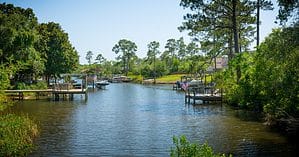Did you know Alabama is full of forests? Indeed, about 69% of Alabama’s land is forest, and private landowners own 93% of the territory. Every year, Alabama’s forests grow by an impressive 2.581 billion cubic feet. That means the state gains over 80,000 acres of forest each year. That’s a lot of trees!
This article will explore who are the top landowners in Alabama and how they help the state by taking care of its precious and growing forests. Keep reading to discover who owns the most acres in Alabama.
1. Foreign Investors — 1.7 Million Acres
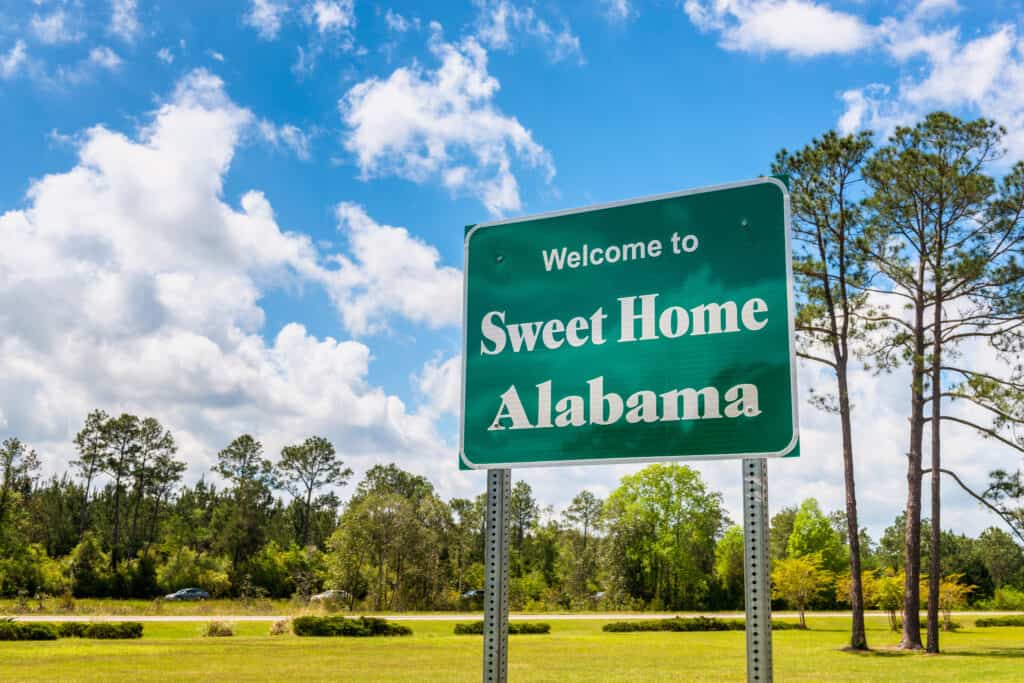
Foreign investors own over 1.7 million acres in Alabama.
©Allard One/Shutterstock.com
Currently, foreign investors own over 1.7 million acres of Alabama’s agricultural land. Of this amount, forests make up a majority, comprising 1,734,581 acres.
Foreign investors are hands-down the top landowners in Alabama. This ranks Alabama as the third-highest state in the nation for foreign ownership.
Next, there’s foreign ownership of cropland totaling 11,359 acres and pastureland of 3,222. A recently proposed legislation seeks to protect these lands from foreign acquisition. It’ll do so by restricting foreign governments from purchasing agricultural real estate. This bill would help ensure that these lands remain under local stewardship. This legislation would protect the land from outside influence while preserving its agricultural uses for the future. But there are always two sides to every situation.
International businesses help the growth of Alabama’s economy, supporting 120,100 U.S. jobs across the state. Of these positions, 65,900 are within the manufacturing sector. The manufacturing sector is growing thanks to international investment. Currently, 685 overseas companies operate in Alabama, and more international activity is expected in the near future.
As a result of foreign investment, communities across the state benefit from quality job opportunities. There’s also an influx of economic growth. Global investment can continue to play an integral role in expanding Alabama’s financial success. All while providing vital resources and employment to local citizens.
2. Federal Government — 880,188 Acres
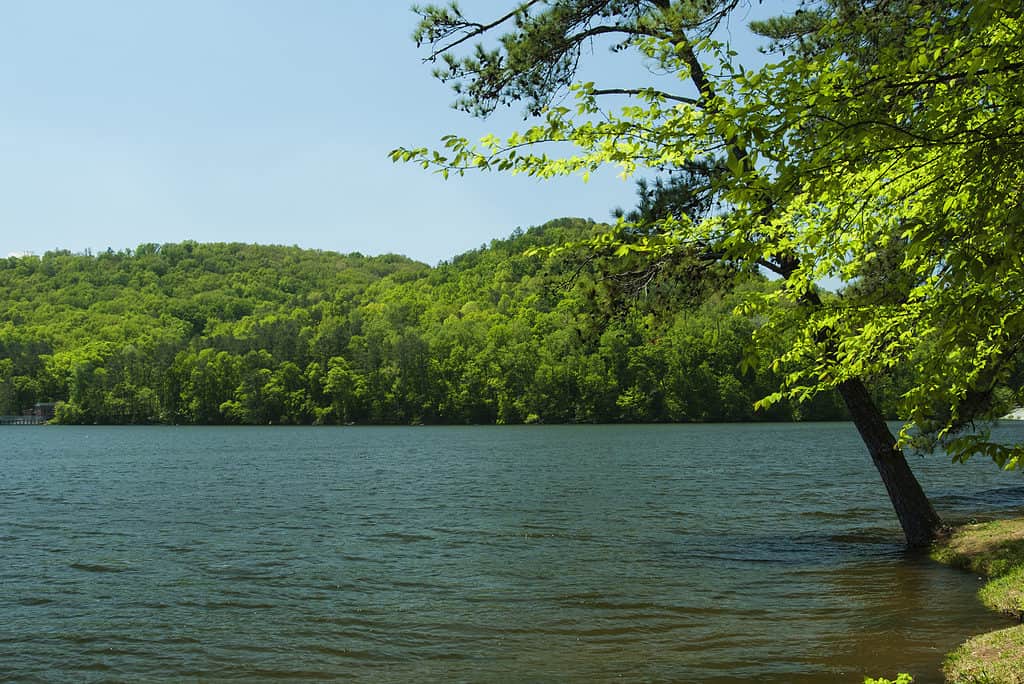
The federal government manages 880,1888 acres in Alabama.
©Jerry Whaley/Shutterstock.com
The federal government manages 880,188 acres in Alabama. The state is home to a diverse range of federally managed lands, comprising 2.7% of the state’s 32.7 million acres. As one of the top landowners in Alabama, the federal government understands the importance of delegating duties.
The lands are under management by various federal agencies. For instance, the US Forest Service oversees 76.2% of the land, and the Department of Defense oversees 17.7%. The Fish and Wildlife Services also care for 3.7% of Alabama’s land. The National Park Service attends to 2%, and the Bureau of Land Management manages 0.3% of the land. These public lands provide more than just economic benefits. They also offer recreational opportunities while protecting Alabama’s fragile ecosystems and wildlife habitats.
Little River Canyon
Check out the federally managed Little River Canyon if you’re ever in Alabama. Little River Canyon offers visitors a chance to experience nature’s wondrous beauty. The park protects the land from degradation and destruction.
The Little River Canyon National Preserve encompasses 15,288 acres of majestic beauty. The river runs for 12 miles before cascading down one final waterfall into the valley below. Along its banks lies a treasure trove of natural resources. There are lush forested hillsides, rocky sandstone cliffs, and more! There are even deep pools that contain countless species of aquatic life.
The preserve is also home to various recreational activities and history lessons. The region’s rich cultural heritage is apparent along the riverbanks and surrounding areas. There you’ll find ancient Cherokee settlements dating back centuries.
3. Weyerhaeuser — 600,00 Acres

Weyerhaeuser owns almost 600,000 acres in Alabama.
©VDB Photos/Shutterstock.com
The growing company Weyerhaeuser owns nearly 600,000 acres of land in Alabama. The company also operates two mills and a nursery in the state. Weyerhaeuser Company is a renowned global leader in timber and wood products. Since 1900, they have managed more than 11 million acres of private timberlands in the U.S. The company even holds licenses for long-term timberlands in Canada.
As a real estate investment trust, Weyerhaeuser generated $7.5 billion in net sales and employed roughly 9,400 people in 2020. This company is a place people can trust to get good lumber and wood products. They have grown by getting to know people’s needs in different parts of the world. They provide services for forests too!
As we mentioned, this company is growing. Weyerhaeuser recently bought more land. After spending $149 million, they own 69,200 acres of high-quality Alabama timberlands from Soterra. This acquisition gives Weyerhaeuser ownership of productive timberlands in southwest Alabama. This is good because it puts them in a strong market for sawlogs and fiber. They own the land and the roads, and the logging access.
Committed to sustainability, Weyerhaeuser is one of America’s largest manufacturers of wood products. The company has been around for more than 100 years. It ensures that the forests are managed well so there are enough resources for everyone. This includes selling the right type of logs from the forests and offering high-quality seedlings.
4. Land Trusts — 459,858 Acres
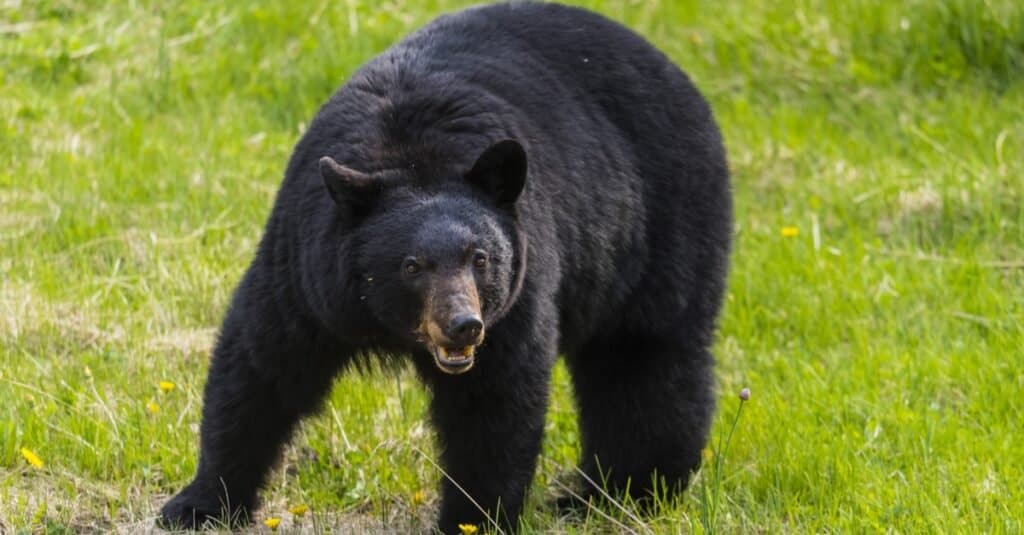
Land trusts help protect Alabama’s wildlife, such as the American black bear.
©BGSmith/Shutterstock.com
The land trusts in Alabama work to protect the state’s natural resources. Through these efforts, over 459,858 acres of Alabama are under their protection. That’s a lot of land! To put it in perspective, all those acres equal about 348,377 football fields. This land includes forests, wetlands, coastal areas, beaches, and more. These diverse habitats are home to a vast array of wildlife. Amongst them is the American black bear, who loves to call Alabama home.
Big or small, these land trusts are finding ways to preserve natural habitats. But that’s not all. They’re preserving land while also educating the public about the importance of conservation.
Connecting people to nature has never been more critical, especially in Alabama. Land trusts have increased their efforts through partnerships, engagement, and outreach. Their goal is to provide local communities with resources and opportunities for connecting to nature.
Individuals can further support conservation initiatives by participating in land trust projects. Volunteering is key to the future of land preservation. Participation also helps residents better understand the land they call home.
Alabama land trusts have had a lot of wins over the decades. For starters, they’ve preserved over 200 miles of trails. They set aside over 18 locations for universal access. All of their hard work is paying off.
Land trusts have been seeing an increase in community engagement over the years. Engagement provides residents with a voice and a platform to share their ideas. This way, everyone can participate in meaningful conservation efforts. Individuals living near protected land will also gain access to new recreational spaces.
5. State Lands Division — 45,000 Acres
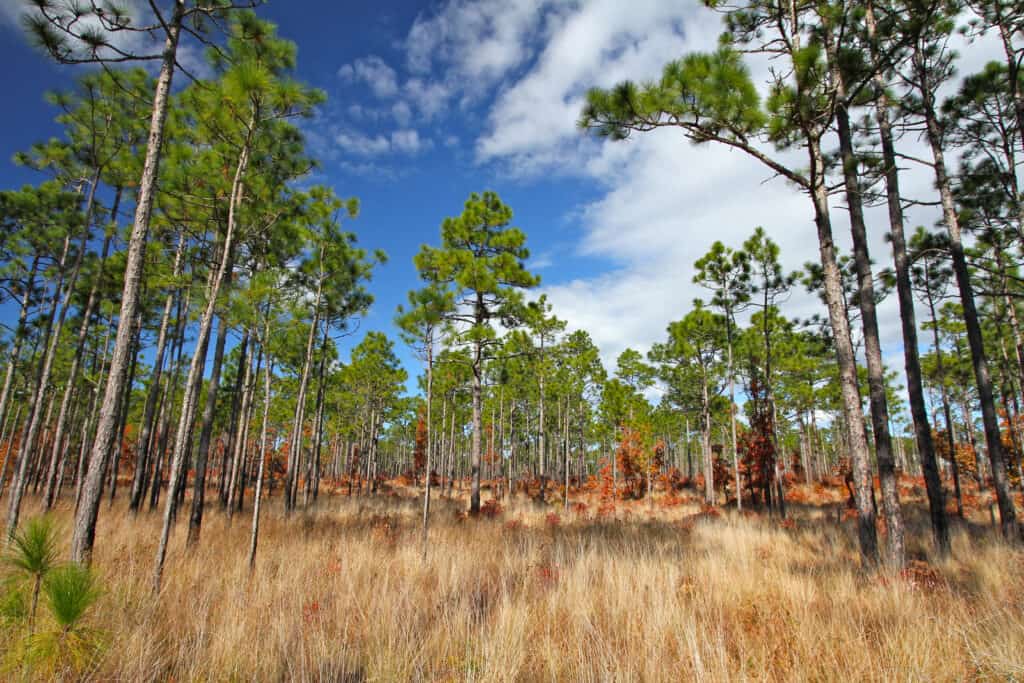
Alabama’s State Lands Division helps protect long-leaf pines.
©Ryan McGurl/Shutterstock.com
Alabama’s State Lands Division oversees 45,000 acres of state-managed land. A lot of this land is situated in the Uplands. The state’s land division is one of the top landowners in Alabama making big strides toward conservation.
Uplands across Alabama feature some of the region’s most diverse ecosystems. These lands harbor various wildlife species, from mountain laurel thickets to sandstone bluffs. The lands are also home to precious natural resources and recreational opportunities. The State Lands Division within the Department of Conservation and Natural Research helps manage and preserve.
The State Lands Division administers leasing activities. It’s their job to ensure proper stewardship and to develop educational programs. They also conduct ecological studies and specialize in land acquisitions and conservation easements. The State Lands Division also decides if the land can be used for farming or building houses.
The state-run department holds auctions for timber harvesting rights and more. Every effort is made through sound management practices. They work hard to maximize revenue while keeping public access available.
The Department of Conservation and Natural Research focuses on preserving natural resources. Alabama’s uplands are critical research locations and link to the past. This includes renting out the land for people to use and making sure people follow the rules when they use it. For instance, lands with long-leaf pines have special rules about timber use. Long-leaf pines are the state tree and provide homes to wildlife.
Alabama Natural Heritage Section
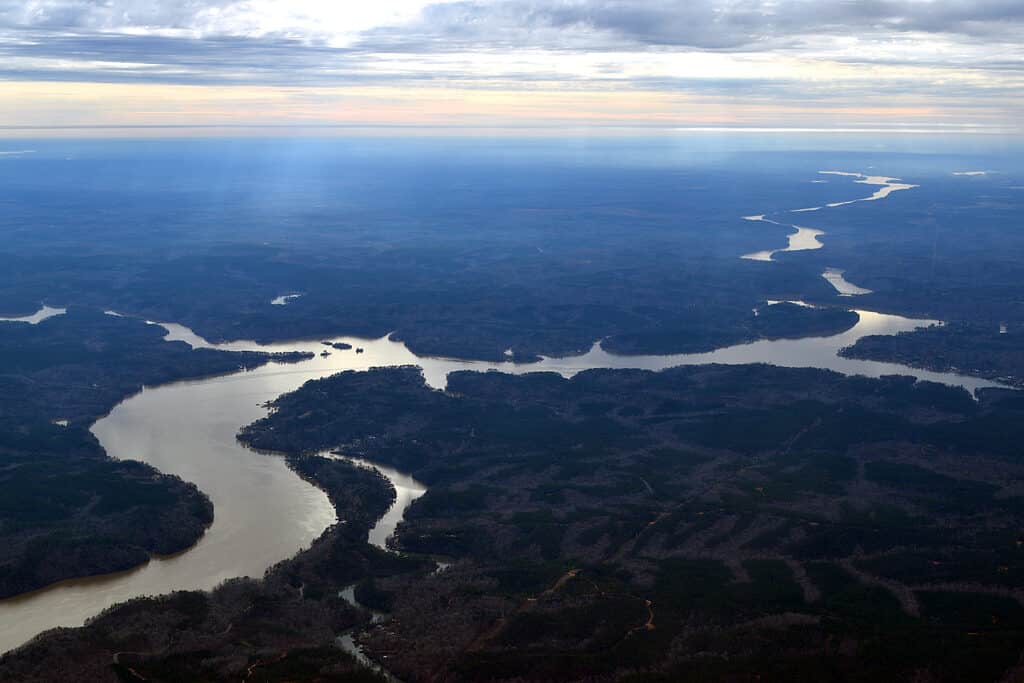
An aerial view of the Coosa River in Alabama.
©Tracy Burroughs Brown/Shutterstock.com
The Alabama Natural Heritage Section is a part of the State Lands Division. They work hard to keep a record of all the different kinds of plants and animals that live in Alabama in the present and those which have lived in the past. The Forever Wild Program helps preserve land in Alabama by using federal grants to buy unique pieces of land.
The Natural Heritage Section also collects data for the Natural Heritage database. This database has about 1.8 million records in it. The Natural Heritage Section uses geographic information systems. These systems help make the information easier to understand. Information is easily accessible to academic researchers and people interested in developing land. This helps preserve natural areas in Alabama for years to come.
Georgia-Alabama Land Trust (GALT)
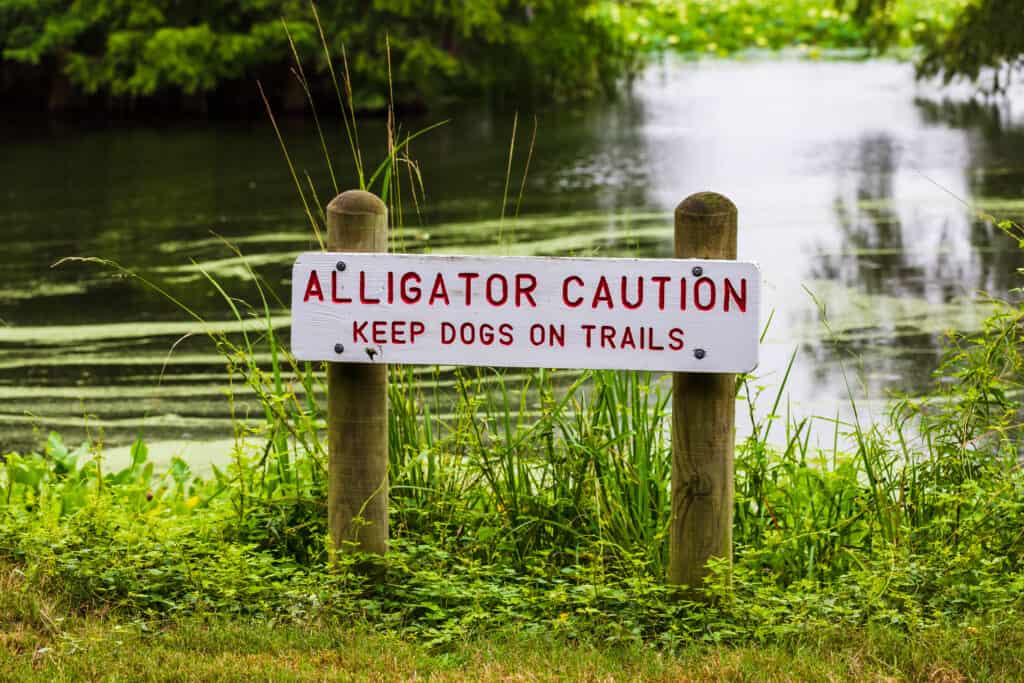
Alligator
Caution sign warning visitors to keep pets safe
©Chad Robertson Media/Shutterstock.com
The Georgia-Alabama Land Trust (GALT) works to preserve the vital resources of the Southeastern United States. GALT works hand-in-hand with landowners across Georgia and Alabama. They’re among the most impactful names on our list of the top landowners in Alabama. It’s GALT’s goal to help protect the land and encourage conservation efforts.
Through fundraising campaigns and problem-solving initiatives, GALT strives to make a difference. Their mission is to raise awareness of the threats facing these lands. They also promote sustainable practices that benefit their local communities.
GALT’s commitment to protecting this vital resource empowers citizens of all backgrounds. Their efforts remind us of our responsibility to protect the natural world for future generations. This land trust is an outstanding example of conservation efforts in the Southeast. By protecting land and natural resources, they are preserving the beauty and uniqueness of the region for generations to come.
In addition to preserving lands through acquisition, the trust works closely with local communities. They organize community events to foster a lasting relationship between nature and its people.
Summary of the 5 Largest Landowners in Alabama
Here is a list of the 5 largest landowners in the state of Alabama:
| Rank | Owner | Land Size |
|---|---|---|
| 1 | Foreign Investors | 1.7 million acres |
| 2 | Federal Government | 880,188 acres |
| 3 | Weyerhaeuser | 600,00 acres |
| 4 | Land Trusts | 459,858 acres |
| 5 | State Lands Division | 45,000 acres |
Final Thoughts on Top Landowners in Alabama
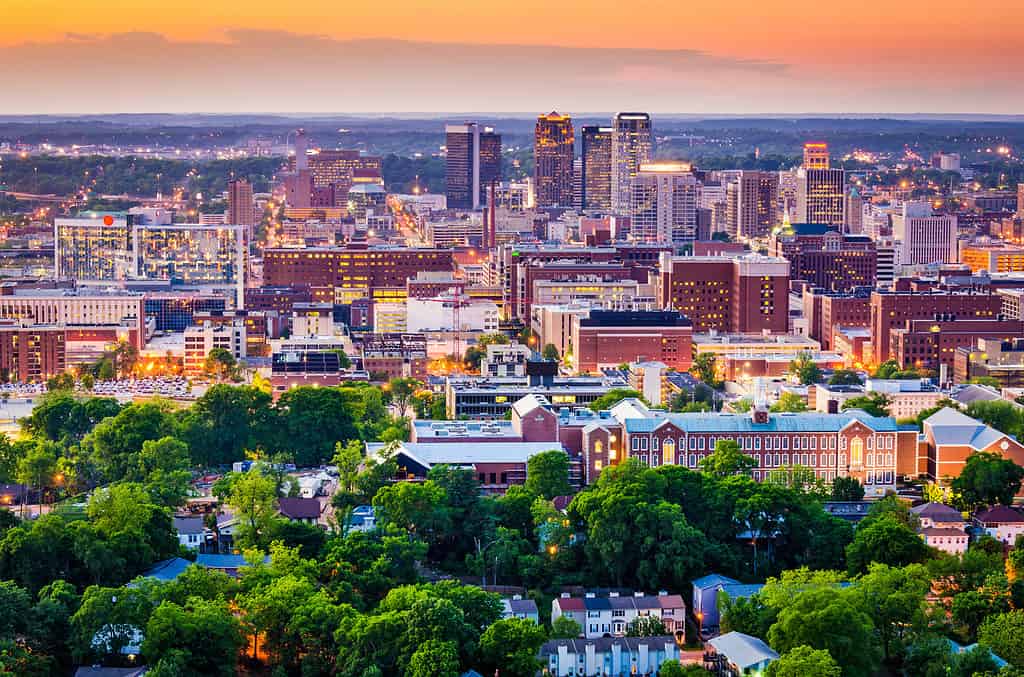
Birmingham, Alabama, USA downtown city skyline.
©Sean Pavone/Shutterstock.com
Now you know about the top landowners in Alabama and how they’re shaping the state’s future. The Alabama State Lands Division has been working hard to preserve natural habitats in Alabama. One of the ways they’re doing this is by educating people about the importance of conservation.
The federal government is also dedicated to managing lands for future generations. They’re creating educational opportunities, recreational activities, and more. Their work helps ensure that Alabamans will always be able to benefit from these valuable resources both now and in the future.
Don’t forget about the Weyerhaeuser Company and its commitment to conservation and sustainability. They’ve been in operation for more than 100 years. Alabama will flourish if the company puts the state’s needs above its commercial goals.
Additionally, land trusts in the state have seen significant success in protecting the environment. They’ve been increasing miles of trails and setting aside land for universal access. Land trusts are also working to improve community engagement. Educational workshops and easy-to-understand land resources help residents learn more about preservation goals. These initiatives demonstrate that we can create positive and lasting change when we work together!
What else should you know about this state? Discover what makes Alabama unique by reading the below articles.
Who Are the Largest Landowners in the United States?
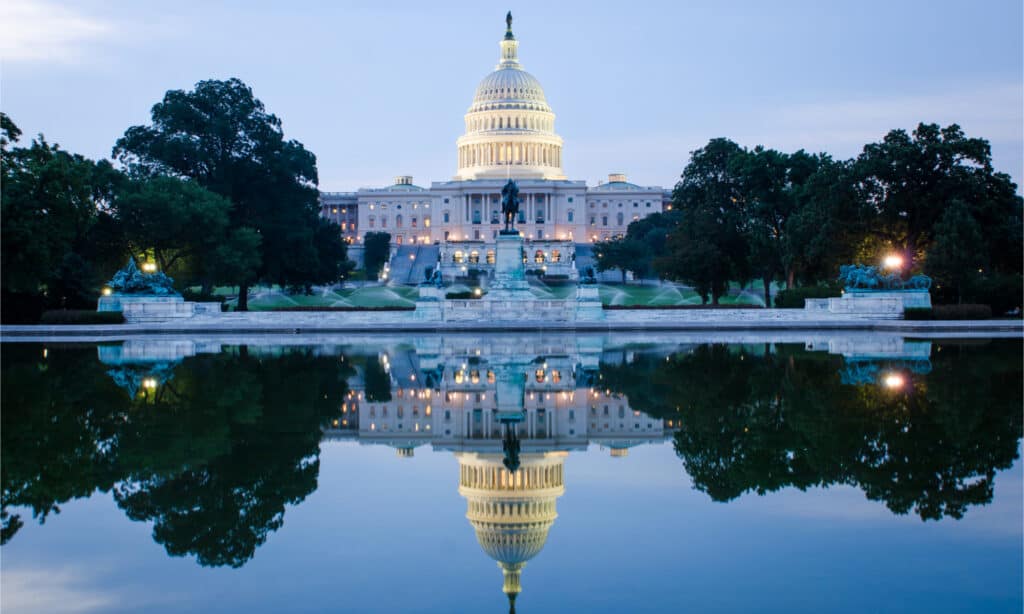
In total U.S. land ownership, the Federal Government comes out on top, owning 640 million acres of land nationwide.
©Orhan Cam/Shutterstock.com
There are two worth mentioning as relating to the largest landowners in the United States. The first is probably pretty obvious-the U.S. Government. Shared between the National Park Service, the Forest Service, the Bureau of Land Management, the Fish and Wildlife Service, and the Department of Defense, over 640 million acres of U.S. land are owned by the Federal Government. That’s roughly ⅓ of all the land in the United States, which averages out to a total of 2.3 billion acres.
The largest landowner in the United States other than the Federal Government is the Emmerson family, whose patriarch Red Emmerson founded Sierra Pacific Industries in Anderson, California. This company is focused on lumber production, operating a number of sawmills. The Emmerson family owns approximately 2,330,000 acres of land.
The other top largest landowners in the U.S. are:
- John Malone–2,200,000 acres (land committed to conservation)
- The Reed Family–2,100,000 acres (lumber production and forests)
- Ted Turner–2,000,000 acres (ranching and agricultural research)
- Stan Kroenke–1,627,500 acres (farmland, ranches, renewable energy)
The photo featured at the top of this post is © Allard One/Shutterstock.com
Sources
- Weyerhaeuser, Available here: https://investor.weyerhaeuser.com/2021-02-25-Weyerhaeuser-to-Acquire-Timberlands-in-Southwest-Alabama
- Stacker, Available here: https://www.al.com/news/anniston-gadsden/2022/05/how-much-land-in-alabama-is-owned-by-the-federal-government.html
- USDA, Available here: https://www.fsa.usda.gov/Assets/USDA-FSA-Public/usdafiles/EPAS/PDF/afida2019report.pdf
- Alabama Land Trust Alliance, Available here: https://landtrustalliance.org/land-trusts/gaining-ground/alabama
Thank you for reading! Have some feedback for us? Contact the AZ Animals editorial team.






